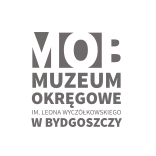Painting studio
Leon Wyczółkowski discontinued making oil painting at the end of his life. He was explaining his departure from this technique by his “(…) inborn aversion to (…) the smell of [oil paints]. (…). It is possible that the reason for this decision was also the quick process of making watercolor and pastel. Wyczółkowski had highly valued the freshness of painting; painting alla prima was in the nature of his talent. Sometimes he painted several watercolor or pastel landscapes a day, whereas painting of flowers in pastel or watercolor was taking one day.” (Twarowska, p. 73). Pastel and watercolor flowers, landscapes and sporadic portraits were made in the Gościeradz studio. It also should be mentioned that during that period, Wyczółkowski was making primarily lithographs and drawings with the use of lithographic pencil and ink, which were later used for production of graphic art.

Close

Painting tools
case with watercolor paints and four-sided palette with remains of oil paints.
Franciszka Wyczółkowska donated to the Museum two cases with watercolor paints. One of them, the black case decorated with the company logo on the top was made in England, by the Reeves company of London, whereas the second one, distinguished by its richer coloring was made in Germany. The four-sided palette features dried out paint remains in such colors as ochre, iron ore red, burnt sienna, dark ochre, light and dark rose madder, white lead, strontium white, and Prussian blue.
Close

Cabinet for painting accessories
This 19th-century cabinet for painting accessories was a very practical component of furnishings of Leon Wyczółkowski’s studio. Thanks to wheels and relatively small dimensions it was a mobile unit. Its three drawers were able to accommodate necessary accessories and supplies needed by the artist for his work, including small-format paper, paints, brushes, and a wide variety of scrapers. The top of the cabinet opens on hinges. It hides a practical case with compartments, which were described by Leon Wyczółkowski for his own convenience, using numbers assigned to pastel colors.
Close

Round painter’s stool
The round painter’s stool of Wyczółkowski consists of two parts: the seat and a three-leg base, from which a screw connects with the upper part of this piece of furniture. This design makes possible adjustment of the stool.
Close

Gościeradz Tram
“Gościeradz Tram” is one of Wyczółkowski’s easels that were part of the permanent setting of his studio, not proper for the outdoor use. It is the so-called “Gościeradz Tram,” which was an alternative of similar equipment built by Wyczółkowski in Krakow. The device allowed for forward and backward movement of the easel in relation to the artist. In the memoirs and letters edited by Maria Twarowska, there is a description of the tram that was located in the Krakow studio. Wyczółkowski’s assistants had taken part in operation of the mechanism. One person was turning the crank at the artist’s request, whereas the second person was giving painting supplies to him. Working in pastel technique, Wyczółkowski was using numbers assigned to a given color. When Wyczółkowski was shouting - number 2 – his servants new which pastel color hand to him. When the artist started to speed up his work, his assistants were frequently not able to keep up with passing to him proper painting accessories and operating the tram mechanism.
It can be assumed that the work at the similar Gościeradz device looked almost the same. The tram consisted of two parts, namely the proper easel, which featured canvas or cardboard, or a board with a stretched sheet of paper, and frames equipped with rails and the crank. The easel had four wheels allowing for its movement on rails. The second part contained two wooden frames connected with each other by hinges, which during operation of the tram were placed on the floor and served as rails. A device consisting of three gears and a crank was fastened to one of the frames, placed under the easel. The second frame has a small wheel on the shorter crosspiece, though which the rope combined with the gear and crank was passing through. The rope is attached to the easel, going through its lower part. When the gears of the frame are set in motion, the rope starts to move and the easel begins to move on rails. In addition to the tram, Wyczółkowski was using traditional plein-air easels, as well as an “easel” made from poles, when it was needed during outdoor painting.


